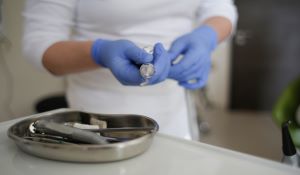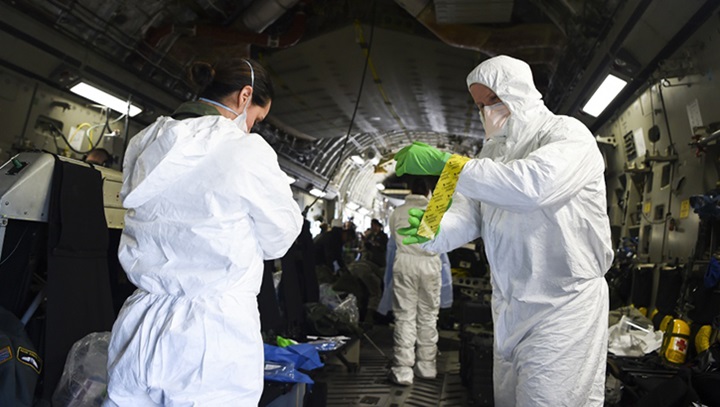COVID-19: What Veterinary Practices Can Do
As veterinary professionals, you are part of the global team of public health officers who must stay updated with accurate information and contribute...
2 min read
Abby Crimm : April 9, 2020 11:20:25 AM PDT

With a few quick glances, there's a lot a veterinary professional can learn about the health of a patient. Dr. Bilbrough explains how to take advantage of a CBC.
Dr. Graham Bilbrough, associate director of medical affairs at IDEXX, is excited about diagnostic technology that allows general practitioners to detect diseases and infection early, picking up on subtle changes in the patient with tools like CBCs. Thanks to teams like Dr. Bilbrough’s, the technology is becoming more accessible and precise than ever.
Dr. Bilbrough sits down with general practitioner Dr. Natalie Marks in this Quick Cup of Knowledge interview to talk about the value of CBCs. They discuss how veterinarians can use them regularly and preventatively, getting the most out of every test.
Complete Blood Count (CBC)
A CBC (complete blood count) and chemistry profile is an invaluable diagnostic tool in any veterinarian or veterinary team member’s toolkit. It’s a more complete look into the health of a patient, measuring the quantity and quality of key indicators like white blood cells, red blood cells, or platelets. Noticing subtle changes within patients using the CBC is significant in practicing preventative medicine or at least early treatment.
Use All That a CBC Has to Offer
Dr. Bilbrough says that most veterinarians only read the hematocrit results, some only read the white blood cell count, and some only read platelets. The first step to getting the best value for your money and the best knowledge available is to learn the several other parameters of the test.
To learn more about what a CBC can tell you, a good resource always is your test provider’s website. Where the results appear, there are lists of information to help interpret each indicator. Their website will also most likely have helpful resources about the tests you order (like this article from IDEXX).
Some of you may remember the days when we had to stare at cells under the microscope in hopes of seeing pathogens. Thanks to CBCs, we can now discover diseases even if the parasites/eggs can’t be found.
The Dot Plot
The dot plot portion of CBC results is often overlooked, but it’s a great way to ingest a lot of information with just a glance or two. And it’s there for everyone on the veterinary team!
Each dot represents a cell that has passed the laser. Dot plots tell a story about the maturity, shape, and other characteristics of those cells. As you can imagine, there is so much information on just one plot. White cell, red cell, platelets, sometimes 15,000 cells at once.
Another advantage to understanding and using visual representations of data, like these dot plots and other graphs that are included in the CBC results, is the ability to educate clients more effectively. When they can see visually what is happening in their pet, they are more likely to comply with the treatment you recommend to fix the issue.
The bottom line—CBCs should be your best friend! As we move into the future of diagnostic technology and receive more data, we will increasingly have quick access to even more specific, reliable data. Crowd sourcing our learning will lead to more effective preventative practices and detecting issues earlier, making a significant impact on the lives of our patients.
Browse CE courses in topics including diagnostics at our WVC Academy website.
Subscribe to our YouTube channel or check out our Resource Library full of great podcasts, videos, and digital downloads!
Disclaimer
Content may contain advertising and sponsorships. Advertisers and sponsors are responsible for ensuring that material submitted for inclusion is accurate and complies with applicable laws. We are not responsible for the illegality of any error, inaccuracy, or problem in the advertiser’s or sponsor’s materials.
Advertising material and/or opinions are not are not a reflection on Viticus Group.

As veterinary professionals, you are part of the global team of public health officers who must stay updated with accurate information and contribute...

"We want to give you a place to turn for the latest advice from the most trusted leaders in the industry."

What we know may be very little, but it will affect our decisions moving forward in the veterinary community.